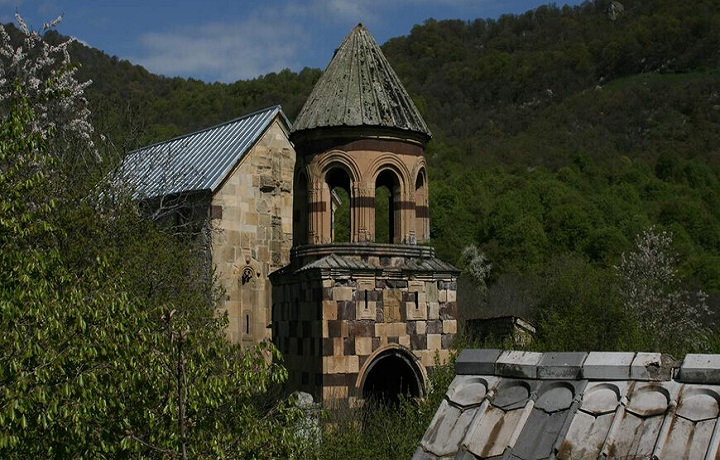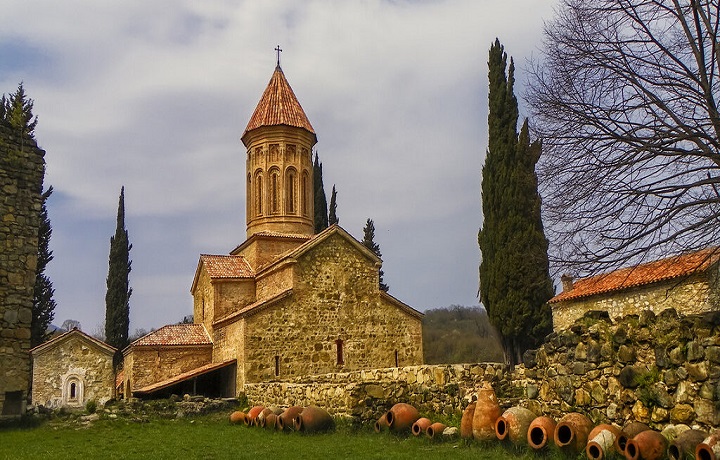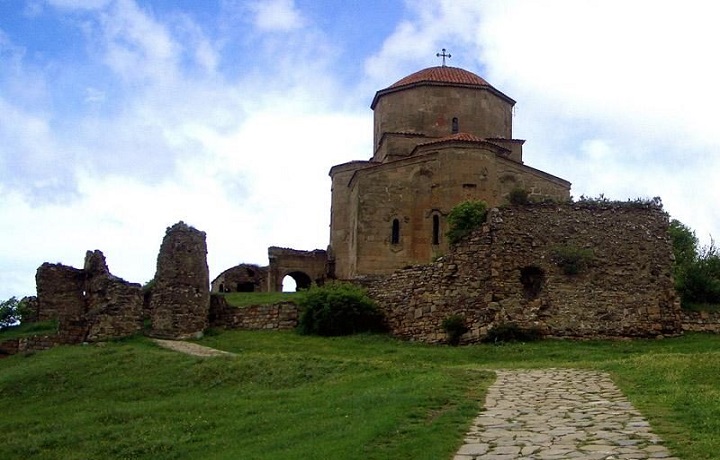Green Monastery (Region of Samtskhe-Javakheti)
The Chitakhevi church of Saint George (Georg. მწვანე მონასტერი) – medieval church in Georgia, located in the Borjomi valley in the Samtskhe-Javakheti region. It is popularly known as the Green Monastery. Abandoned for more than two hundred years, the monastery was restored to Christian use in 2003. It is a popular site of tourism and pilgrimage. The monastic church and bell-tower are inscribed on the list of the Immovable Cultural Monuments of National Significance of Georgia.
The Monastery consists of a three-nave basilica, stylistically dated to the late 9th or 10th century, and a two-storey bell-tower, likewise dated to the XV or XVI century. There are remnants of old monastic cells and some accessory structures nearby. A bell-tower stands a few metres southeast of the church. It is a two-storey structure. The ground floor houses a small chapel; the upper floor is a belfry with arched, parallel-sided apertures supported on massive columns.













